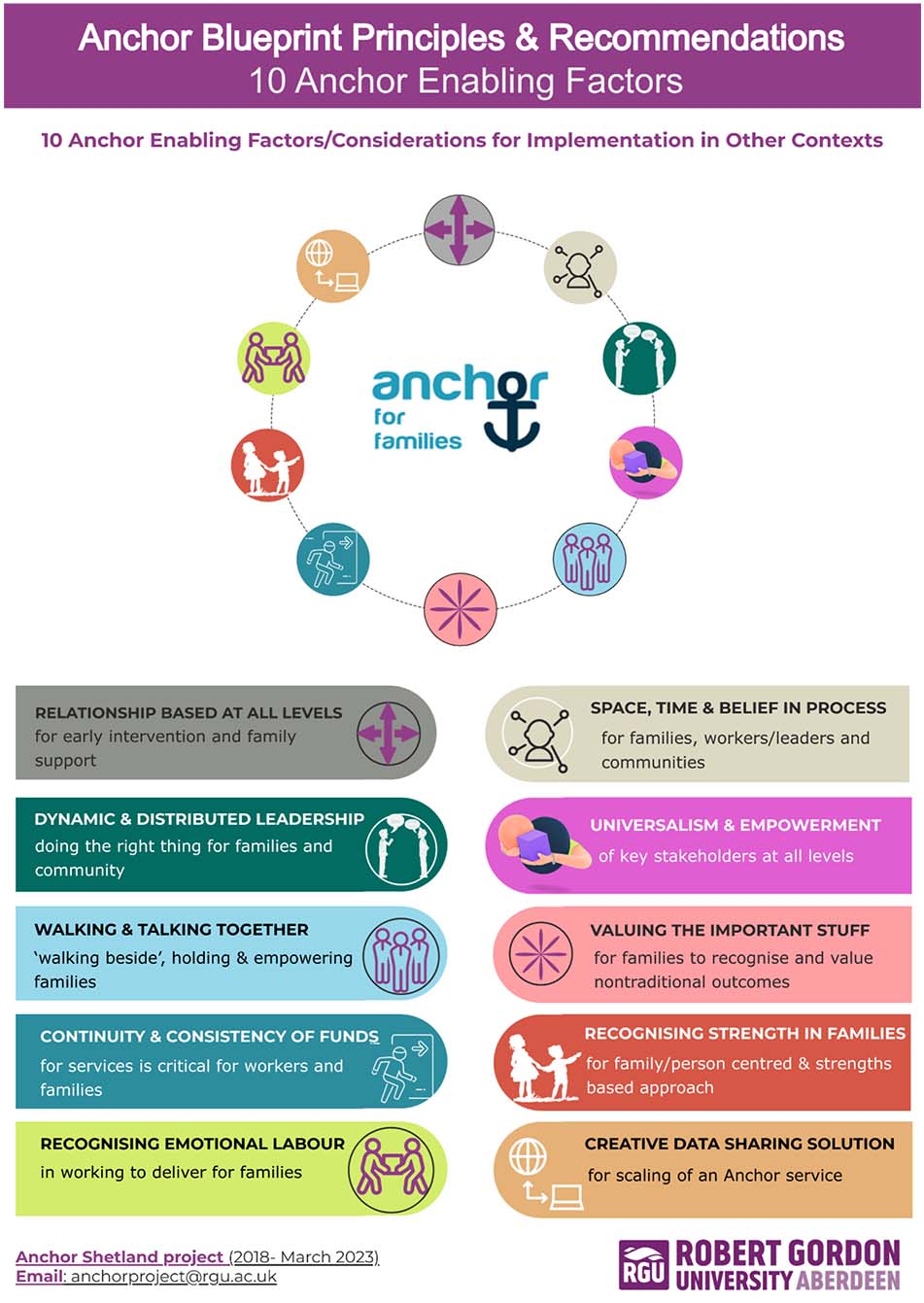A Co-constructed and Co-produced Evaluation of the Anchor Project in Shetland
The Anchor Project sits within an ambitious Scottish Government policy landscape to eradicate child poverty through involving children and families in a fair and inclusive manner. The overall aim of Anchor was to facilitate learning and action in family led problem solving and early intervention.
Appendix vi. Anchor Project Theory of Change

Anchor Blueprint Principles & Recommendations – 10 Anchor Enabling Factors/Considerations for Implementation in Other Contexts
1. Relationship based at all levels for early intervention and family support
2. Dynamic & distributed leadership doing the right thing for families and community
3. Walking & talking together ‘walking beside’, holding and empowering families
4. Continuity & consistency of funds for services is critical for workers and families
5. Recognising emotional labour in working to deliver for families
6. Space, time & belief in process for families, workers/leaders and communities
7. Universalism & empowerment for key stakeholders at all levels
8. Valuing the important stuff for families to recognise and value nontraditional outcomes
9. Recognising strength in families for family/person centred & strength based approach
10. Creative data sharing solution for scaling of an Anchor service
Contact
Email: clld@gov.scot
There is a problem
Thanks for your feedback